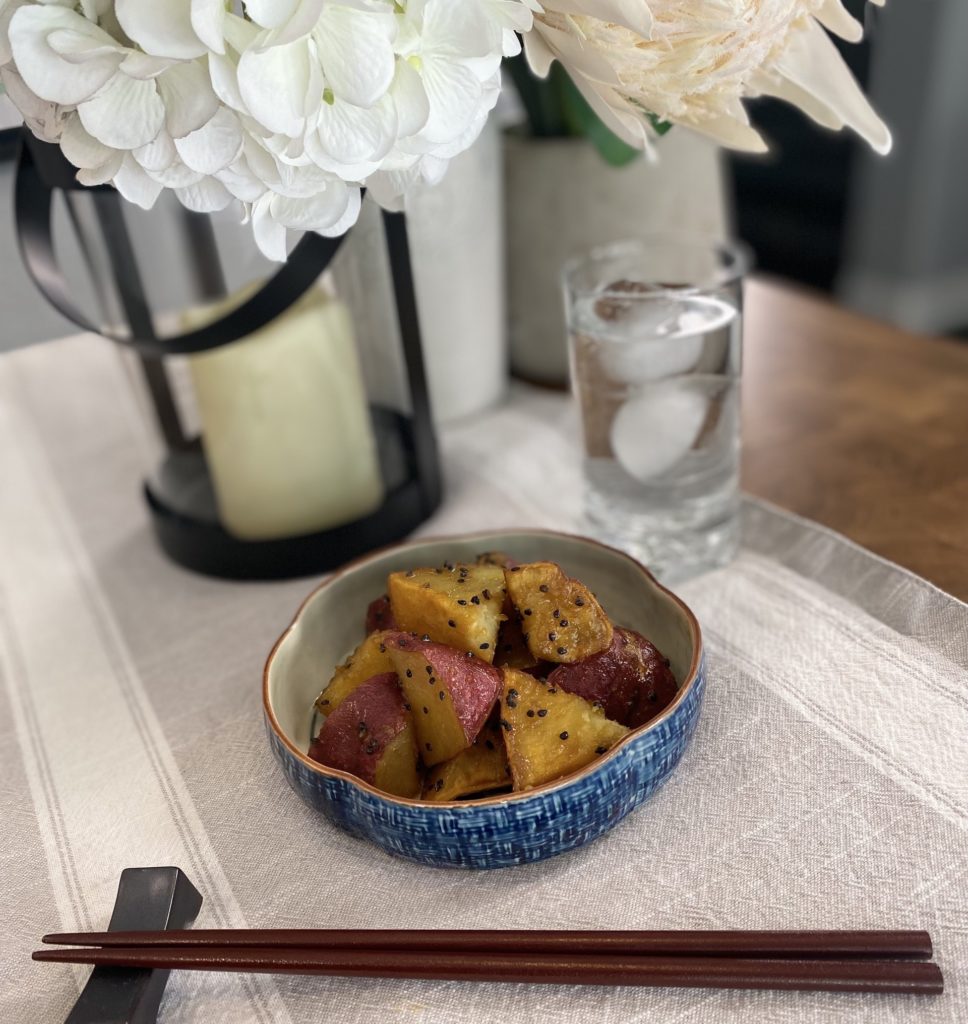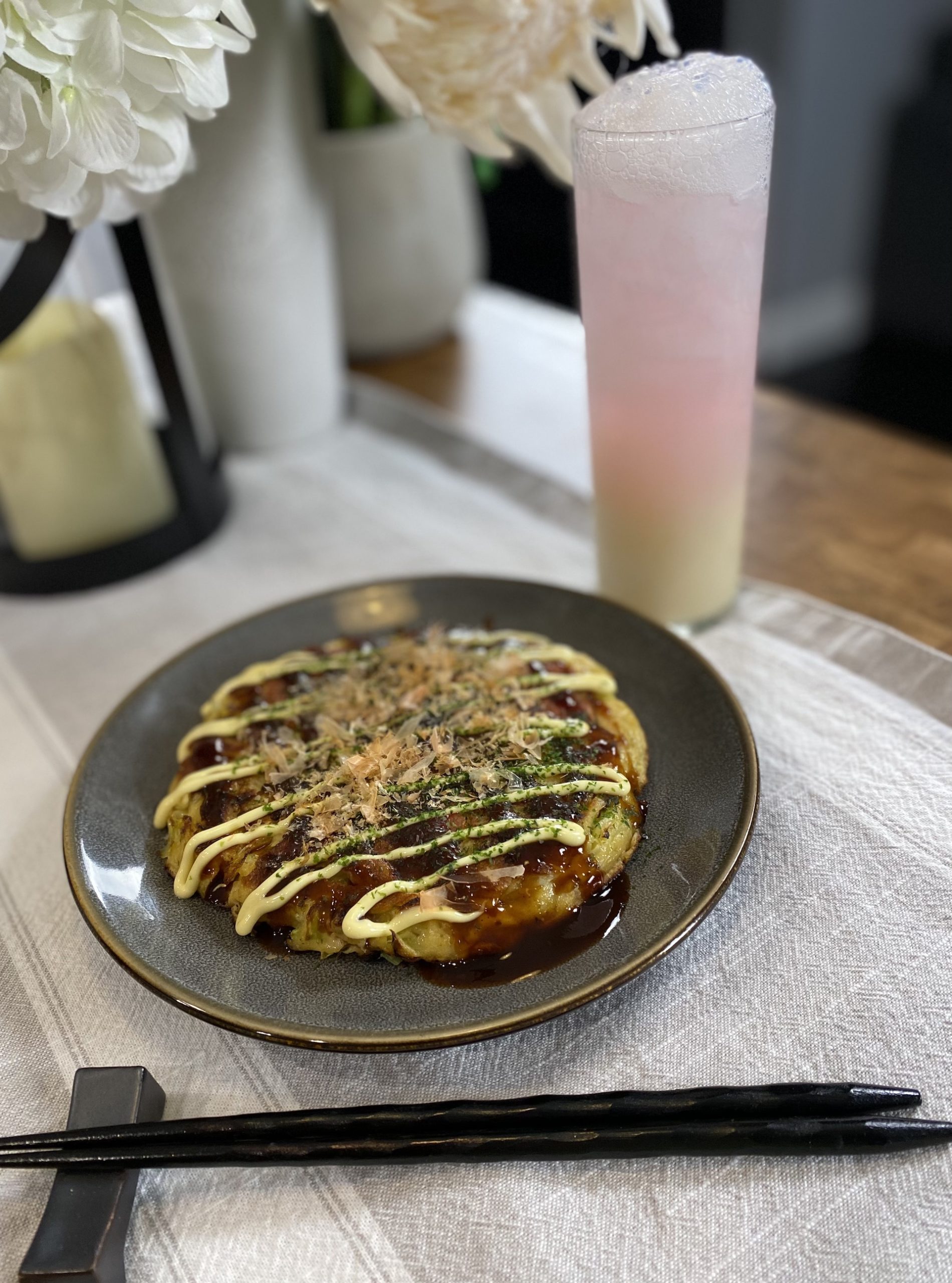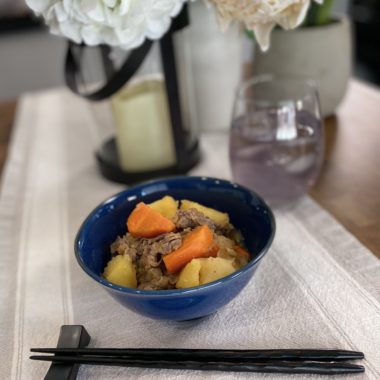Details
2
15 minutes
45 minutes
Daigaku Imo literally translates to “University Potatoes,” made specifically with Japanese sweet potatoes. When local shops near university campuses started making daigaku imo a couple hundred years ago, it was a huge hit. It’s been popular with students and non-students ever since!
If you’ve spent any time on a college campus, there are always local vendors making treats for students. In the fall and winter, Japanese sweet potatoes (satsumaimo, or “Satsuma Potatoes”) are in season. Many vendors sell roasted sweet potatoes straight from their cart. When I was a kid, they’d come wrapped in newspaper.
Daigaku imo is a “fancy” upgrade from the traditional roasted satsumaimo, but it’s still a simple recipe.
Traditionally, daigaku imo is made in a frying pan. The oil used when frying makes the edges of the sweet potato pieces a crunchy juxtaposition to the fluffy interior. The problem is, the coating also gets pretty hard; it can be a little challenging when you bite into the old-school version.
This version pulls you away from the stove by using a rice cooker (great in hotter months). No crunchy edges from pan-frying, but it’s definitely lower in fat and calories, without sacrificing any of the flavor. Plus, it’s way easier to make! Let your daigaku imo cool at least to room temperature, to enjoy all of the nuanced umami. It’ll also allow you to take advantage of resistant starch and fiber in this popular traditional Japanese treat.

Ingredients
- 1 Satsumaimo (Japanese sweet potato)
- 1/2 Tbsp soy sauce (can substitute tamari if gluten-sensitive)
- 1 Tbsp unsalted butter
- 1/2 Tbsp mirin
- 1/2 Tbsp granulated sugar
- 1 Tbsp honey
- Pinch of salt
- Black sesame seeds
Directions
Cut satsumaimo (Japanese sweet potato) into pieces that are a little larger than bite-size.
Soak satsumaimo pieces in a bowl of water for 30 minutes to pull out impurities and excess starch.
Blot off soaked satsumaimo pieces with paper towels and add to rice cooker bowl.
Add soy sauce (or tamari), mirin, sugar, butter, and honey.
Add a pinch of salt. Omit if using salted butter. Alternatively, you can omit adding salt completely until serving if you’re watching your salt intake. The soy sauce has some salt already.
Cook in rice cooker at normal / standard setting (white rice).
Once rice cooker is done, toss everything together.
Garnish with black sesame seeds (and salt if desired).
Daigaku Imo can be enjoyed by itself as a snack, or as a side dish to a full meal. It can be enjoyed hot, straight out of the rice cooker. I prefer to let it cool off a bit first to enjoy all of the flavors properly. The honey and butter thicken when cooled, making a delicious coating to the entire dish.
I definitely recommend waiting until your daigaku imo gets to room temperature before enjoying. That is, if you have the patience to keep yourself from devouring them right away!


